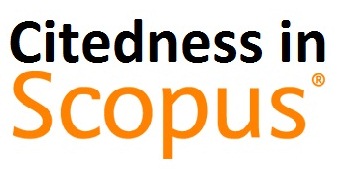Ambidextrous AI Governance Design Based on COBIT 2019 Traditional and DevOps for TelCo’s Digital Transformation
DOI:
https://doi.org/10.38043/tiers.v6i1.6610Keywords:
Ambidextrous AI Governance, Digital Transformation, COBIT 2019, DevOps, APO12Abstract
Artificial intelligence (AI) is a key enabler of digital transformation in telecommunications, improving operational efficiency and customer experience. However, telecom companies face governance challenges such as regulatory compliance risks, security vulnerabilities, and limited risk management capabilities, hindering effective AI adoption. This case study aims to address AI adoption challenges by developing an ambidextrous AI governance framework based on COBIT 2019 and DevOps. Using design science research methodology, the framework was designed and evaluated through semi-structured interviews with key TelCo stakeholders and validated with internal documents until data saturation was reached. The analysis applied the ambidextrous COBIT 2019 framework across seven governance components. Governance and Management Objectives (GMOs) were prioritized based on design factors, devops, national regulations (SOE Minister No.PER-2/MBU/03/2023 and ICT Minister No.5/2021), and literature. As a result, APO12 (Managed Risk) was selected as the key objective. Recommendations include formalizing AI governance roles, enhancing AI-related risk training, and implementing advanced GRC and automation tools. This improvement will increase the APO12 maturity level from 3.83 to 4.66. This improvement will enhance TelCo’s capabilities in risk management, compliance, and innovation, offering practical insights for practitioners and contributing to the academic discourse on ambidextrous AI governance for sustainable digital transformation.
Downloads
References
M. Malik, A. Andargoli, K. Pala, and G. L. Tortorella, Towards explaining the effects of the human-technology dynamic on human agency in digital transformations, Int. J. Inf. Manage., vol. 84, no. April, p. 102915, 2025, doi: 10.1016/j.ijinfomgt.2025.102915.
K. Slimani, S. Khoulji, A. Mortreau, and M. L. Kerkeb, From tradition to innovation: The telecommunications metamorphosis with AI and advanced technologies, J. Auton. Intell., vol. 7, no. 1, pp. 111, 2024, doi: 10.32629/jai.v7i1.1099.
O. Pricopoaia, N. Cristache, A. Lupac, and D. Iancu, The implications of digital transformation and environmental innovation for sustainability, J. Innov. Knowl., vol. 10, no. 3, 2025, doi: 10.1016/j.jik.2025.100713.
D. Plekhanov, H. Franke, and T. H. Netland, Digital transformation: A review and research agenda, Eur. Manag. J., vol. 41, no. 6, pp. 821844, 2023, doi: 10.1016/j.emj.2022.09.007.
B. Al-haimi, H. Khalid, N. H. Zakaria, and T. H. Jasimin, Digital transformation in the real estate industry: A systematic literature review of current technologies, benefits, and challenges, Int. J. Inf. Manag. Data Insights, vol. 5, no. 1, p. 100340, 2025, doi: 10.1016/j.jjimei.2025.100340.
J. Fernandez-Vidal, F. Antonio Perotti, R. Gonzalez, and J. Gasco, Managing digital transformation: The view from the top, J. Bus. Res., vol. 152, no. January, pp. 2941, 2022, doi: 10.1016/j.jbusres.2022.07.020.
M. Baslyman, Digital Transformation from the Industry Perspective: Definitions, Goals, Conceptual Model, and Processes, IEEE Access, vol. 10, pp. 4296142970, 2022, doi: 10.1109/ACCESS.2022.3166937.
R. Mulyana, L. Rusu, and E. Perjons, IT Governance Mechanisms that Influence Digital Transformation: A Delphi Study in Indonesian Banking and Insurance Industry, Pacific Asia Conf. Inf. Syst. (PACIS), AI-IS-ASIA, pp. 116, 2022, [Online]. Available: https://aisel.aisnet.org/pacis2022/267/
C. Gong and V. Ribiere, Developing a unified definition of digital transformation, Technovation, vol. 102, no. December 2020, p. 102217, 2021, doi: 10.1016/j.technovation.2020.102217.
P. S. Arce-Lpez, D. Cabeza-Pulls, A. Ruiz-Moreno, and T. Ortega-Egea, Ever-present cognitive diversity: The mediating role of sentimentality and creative self-efficacy in achieving ambidextrous behavior, Think. Ski. Creat., vol. 57, no. August 2023, 2025, doi: 10.1016/j.tsc.2025.101856.
R. Mulyana, L. Rusu, and E. Perjons, How Hybrid IT Governance Mechanisms Influence Digital Transformation and Organizational Performance in the Banking and Insurance Industry of Indonesia, Proc. 31st Int. Conf. Inf. Syst. Dev., 2023, doi: 10.62036/isd.2023.33.
R. Mulyana, L. Rusu, and E. Perjons, IT governance mechanisms influence on digital transformation: A systematic literature review, 27th Annu. Am. Conf. Inf. Syst. AMCIS 2021, pp. 010, 2021, [Online]. Available: https://aisel.aisnet.org/amcis2021/adv_info_systems_general_track/adv_info_systems_general_track/19/
T. Birkstedt, M. Minkkinen, A. Tandon, and M. Mntymki, AI governance: themes, knowledge gaps and future agendas, Internet Res., vol. 33, no. 7, pp. 133167, 2023, doi: 10.1108/INTR-01-2022-0042.
A. Taeihagh, Governance of artificial intelligence, Policy Soc., vol. 40, no. 2, pp. 137157, 2021, doi: 10.1080/14494035.2021.1928377.
B. Attard-Frost, A. Brandusescu, and K. Lyons, The governance of artificial intelligence in Canada: Findings and opportunities from a review of 84 AI governance initiatives, Gov. Inf. Q., vol. 41, no. 2, p. 101929, 2024, doi: 10.1016/j.giq.2024.101929.
BUMN, Peraturan Menteri Badan Usaha Milik Negara Pedoman Tata kelola dan Kegiatan Korporasi Signifikan Badan Usaha Milik Negara, 2023. [Online]. Available: https://bumn.go.id/
Y. Gong, J. Yang, and X. Shi, Towards a comprehensive understanding of digital transformation in government: Analysis of flexibility and enterprise architecture, Gov. Inf. Q., vol. 37, no. 3, p. 101487, 2020, doi: 10.1016/j.giq.2020.101487.
C. Wu, H. Zhang, and J. M. Carroll, AI Governance in Higher Education: Case Studies of Guidance at Big Ten Universities, Futur. Internet, vol. 16, no. 10, 2024, doi: 10.3390/fi16100354.
B. W. Wirtz, J. C. Weyerer, and B. J. Sturm, The Dark Sides of Artificial Intelligence: An Integrated AI Governance Framework for Public Administration, Int. J. Public Adm., vol. 43, no. 9, pp. 818829, 2020, doi: 10.1080/01900692.2020.1749851.
G. Gordon, B. Rieder, and G. Sileno, On mapping values in AI Governance, Comput. Law Secur. Rev., vol. 46, p. 105712, 2022, doi: 10.1016/j.clsr.2022.105712.
R. Mulyana, L. Rusu, and E. Perjons, Key ambidextrous IT governance mechanisms for successful digital transformation: A case study of Bank Rakyat Indonesia (BRI), Digit. Bus., vol. 4, no. 2, p. 100083, 2024, doi: 10.1016/j.digbus.2024.100083.
R. Mulyana, L. Rusu, and E. Perjons, Key Ambidextrous IT Governance Mechanisms Influence on Digital Transformation and Organizational Performance inDigital Transformation and Organizational Performance in Indonesian Banking and InsuranceIndonesian Banking and Insurance, 2024, pp. 173197. doi: 10.1007/978-3-031-57189-3_9.
J. Zhen, Z. Xie, and K. Dong, Impact of IT governance mechanisms on organizational agility and the role of top management support and IT ambidexterity, Int. J. Account. Inf. Syst., vol. 40 (C), 2021, doi: 10.1016/j.accinf.2021.100501.
ISACA, COBIT 2019 Framework - Introduction and Methodology. 2019. [Online]. Available: https://store.isaca.org/s/store#/store/browse/detail/a2S4w000004Ko9cEAC
ISACA, COBIT Focus Area: DevOps. 2021. [Online]. Available: https://store.isaca.org/s/store#/store/browse/detail/a2S4w000004Ko9dEAC
A. Wiedemann, M. Wiesche, H. Gewald, and H. Krcmar, Integrating development and operations teams: A control approach for DevOps, Inf. Organ., vol. 33, no. 3, p. 100474, 2023, doi: 10.1016/j.infoandorg.2023.100474.
L. Jaime and J. Barata, How can FLOSS Support COBIT 2019 coverage analysis and a conceptual framework, Procedia Comput. Sci., vol. 219, no. 2022, pp. 680687, 2023, doi: 10.1016/j.procs.2023.01.339.
ISACA, COBIT 2019 Framework- Governance and Management Objectives, COBIT 2019 Framework. [Online]. Available: https://store.isaca.org/s/store#/store/browse/detail/a2S4w000004Ko9ZEAS
O. H. Plant, J. van Hillegersberg, and A. Aldea, Rethinking IT governance: Designing a framework for mitigating risk and fostering internal control in a DevOps environment, Int. J. Account. Inf. Syst., vol. 45, no. January 2021, p. 100560, 2022, doi: 10.1016/j.accinf.2022.100560.
R.Mulyana, IT Governance Influence on Digital Transformation, Stockholm University, Stockholm, Sweden, 2025. [Online]. Available: https://urn.kb.se/resolve?urn=urn:nbn:se:su:diva-242507
R. Mulyana, L. Rusu, and E. Perjons, Association for Information Systems Association for Information Systems Key Ambidextrous IT Governance Mechanisms In>uence on Key Ambidextrous IT Governance Mechanisms In>uence on Digital Transformation and Organizational Performance in Digital Transforma, no. July, pp. 116, 2024, [Online]. Available: https://aisel.aisnet.org/pacis2024
N. Iqza, W. Ode Rayyani, and F. Syah, Analysis of Financial Performance in Telecommunication Companies listed on the BEI, Int. Econ. Bus. Conf., vol. 1, no. 1, pp. 356364, 2023, doi: https://doi.org/10.35912/iecon.v1i1.154.
N. Vemuri, N. Thaneeru, and V. Manoj Tatikonda, AI-Driven Predictive Maintenance in the Telecommunications Industry, J. Sci. Technol., vol. 3, no. 2, pp. 2145, 2022, doi: 10.55662/jst.2022.3201.
Hevner, Design Science in Information Systems Research, 2004, doi: https://doi.org/10.2307/25148625.
Y. Bozkurt, A. Rossmann, Z. Pervez, and N. Ramzan, Development and evaluation of an urban data governance reference model based on design science research, Gov. Inf. Q., vol. 42, no. 2, p. 102025, 2025, doi: 10.1016/j.giq.2025.102025.
R. Yin, How to do Better Case Studies: (With Illustrations from 20 Exemplary Case Studies), in The SAGE Handbook of Applied Social Research Methods, 2455 Teller Road, Thousand Oaks California 91320 United States: SAGE Publications, Inc., 2009, pp. 254282. doi: 10.4135/9781483348858.n8.
P. Johannesson and E. Perjons, An introduction to design science, vol. 9783319106. 2014. doi: 10.1007/978-3-319-10632-8.
A. K. Shenton, Strategies for ensuring trustworthiness in qualitative research projects, Educ. Inf., vol. 22, no. 2, pp. 6375, 2004, doi: 10.3233/EFI-2004-22201.
P. I. Fusch and L. R. Ness, Are we there yet? Data saturation in qualitative research, Qual. Rep., vol. 20, no. 9, pp. 14081416, 2015, doi: 10.46743/2160-3715/2015.2281.
B. M. Jennings and K. A. Yeager, Re-viewing the concept of saturation in qualitative research, Int. J. Nurs. Stud. Adv., vol. 8, no. August 2024, p. 100298, 2025, doi: 10.1016/j.ijnsa.2025.100298.
O. C. Enworo, Application of Guba and Lincolns parallel criteria to assess trustworthiness of qualitative research on indigenous social protection systems, Qual. Res. J., vol. 23, no. 4, pp. 372384, 2023, doi: 10.1108/QRJ-08-2022-0116.
KOMINFO, Peraturan Menteri Komunikasi dan Informatika Republik Indonesia No 5 Tahun 2021 Tentang Penyelenggaraan Telekomunikasi, Pap. Knowl. . Towar. a Media Hist. Doc., pp. 1226, 2021, [Online]. Available: https://jdih.komdigi.go.id/produk_hukum/view/id/768/t/peraturan+menteri+komunikasi+dan+informatika+n
J. Brown, An examination of the Skills Framework for the Information Age (SFIA) version 7, Int. J. Inf. Manage., vol. 51, no. April 2019, p. 102058, 2020, doi: 10.1016/j.ijinfomgt.2019.102058.
N. Rashikha, R. Mulyana, and R. Hanafi, Using COBIT 2019 SME for Digital Transformation Governance of BPRDCo, pp. 16781691, 2019, doi: 10.35889/jutisi.v13i3.2250.
Downloads
Published
How to Cite
Issue
Section
License
Copyright (c) 2025 Nasywah Nabilah Putri, Rahmat Mulyana, Taufik Nur Adi

This work is licensed under a Creative Commons Attribution-ShareAlike 4.0 International License.





















